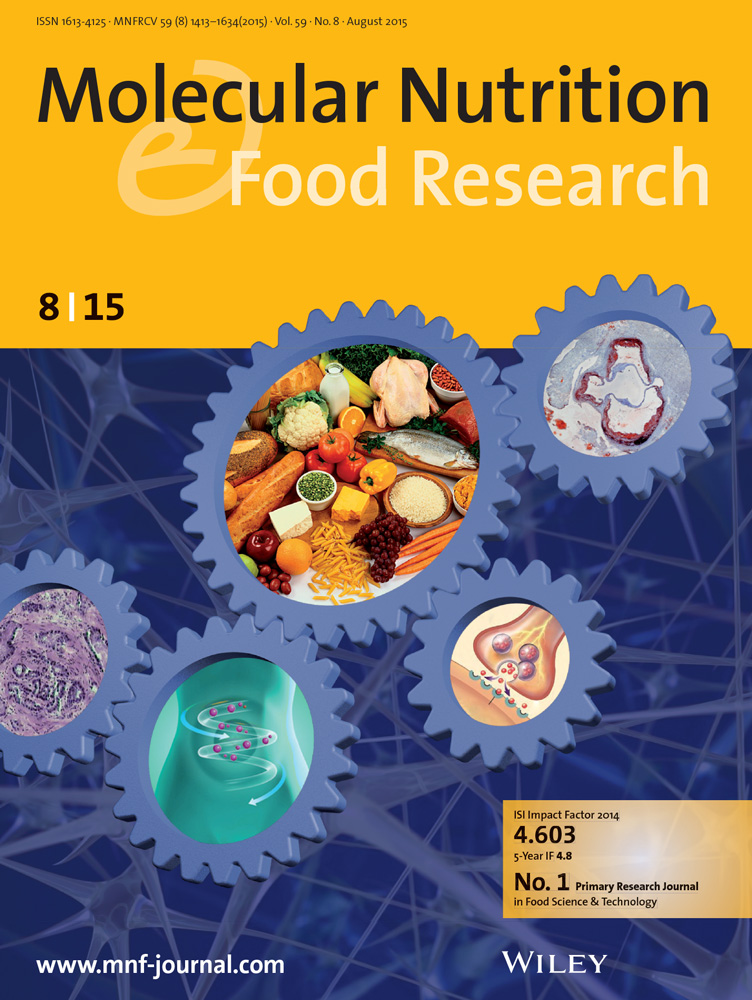Grape Seed Proanthocyanidins: A Potential Microbiome-Targeted Intervention for Healthy Aging in Rats.
IF 4.2
2区 农林科学
Q1 FOOD SCIENCE & TECHNOLOGY
引用次数: 0
Abstract
Aging and age-related metabolic complications are global health issues that pose a serious threat to public health. Gut dysfunction and dysbiosis contribute to age-related health decline. Grape seed-derived procyanidins (GSPE) have shown efficacy in mitigating adaptive homeostasis decline in young animal models, but their impact on intestinal health and the gut microbiome in aged animals remains unexplored. Twenty-one-month-old female rats were treated with 500 mg GSPE/kg of body weight for 10 days. After 11 weeks, GSPE anti-aging potential was evaluated by measuring plasma lipopolysaccharide, gut integrity gene expression, ex vivo gut barrier function, myeloperoxidase activity, and fecal microbiome composition. GSPE shifted the microbiota toward a younger profile, even restoring lost strains in aged rats. Despite the presence of metabolic aging markers, there was minimal deterioration in gut barrier function. Neither ex vivo permeability tests, transcriptional analysis of barrier function, nor gut histology showed significant impairment in gut. Only jejunal myeloperoxidase activity was increased in aged rats and reduced by GSPE. Intestinal barrier function showed mild deterioration in this model of aged rats. GSPE improved the aging process by modulating the gut microbiome, suggesting its potential as a microbiome-targeted intervention for promoting healthy aging.葡萄籽原花青素:一种潜在的微生物组靶向干预大鼠健康衰老。
老龄化和与年龄有关的代谢并发症是对公共卫生构成严重威胁的全球性健康问题。肠道功能紊乱和生态失调会导致与年龄相关的健康衰退。葡萄籽来源的原花青素(GSPE)在幼龄动物模型中显示出减轻适应性稳态下降的功效,但它们对老年动物肠道健康和肠道微生物组的影响仍未被探索。21月龄雌性大鼠以500 mg GSPE/kg体重治疗10 d。11周后,通过测定血浆脂多糖、肠道完整性基因表达、体外肠道屏障功能、髓过氧化物酶活性和粪便微生物组组成来评估GSPE的抗衰老潜力。GSPE使微生物群向更年轻的方向转变,甚至在年老的老鼠身上恢复了失去的菌株。尽管存在代谢衰老标志物,但肠道屏障功能的恶化程度很小。体外渗透性测试、屏障功能转录分析和肠道组织学均未显示肠道有明显损伤。GSPE只增加老年大鼠空肠髓过氧化物酶活性,降低其活性。老龄大鼠肠道屏障功能出现轻度退化。GSPE通过调节肠道微生物组来改善衰老过程,这表明它有潜力作为一种以微生物组为目标的干预措施来促进健康衰老。
本文章由计算机程序翻译,如有差异,请以英文原文为准。
求助全文
约1分钟内获得全文
求助全文
来源期刊

Molecular Nutrition & Food Research
工程技术-食品科技
CiteScore
8.70
自引率
1.90%
发文量
250
审稿时长
1.7 months
期刊介绍:
Molecular Nutrition & Food Research is a primary research journal devoted to health, safety and all aspects of molecular nutrition such as nutritional biochemistry, nutrigenomics and metabolomics aiming to link the information arising from related disciplines:
Bioactivity: Nutritional and medical effects of food constituents including bioavailability and kinetics.
Immunology: Understanding the interactions of food and the immune system.
Microbiology: Food spoilage, food pathogens, chemical and physical approaches of fermented foods and novel microbial processes.
Chemistry: Isolation and analysis of bioactive food ingredients while considering environmental aspects.
 求助内容:
求助内容: 应助结果提醒方式:
应助结果提醒方式:


